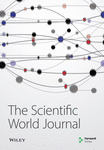High-Resolution Northern Blot for a Reliable Analysis of MicroRNAs and Their Precursors
Abstract
This protocol describes how to perform northern blot analyses to detect microRNAs and their precursors with single-nucleotide resolution, which is crucial for analyzing individual length variants and for evaluating relative quantities of unique microRNAs in cells. Northern blot analysis consists of resolving RNAs by gel electrophoresis, followed by transferring and fixing to nylon membranes as well as detecting by hybridization with radioactive probes. Earlier efforts to improve this method focused mainly on altering the sensitivity of short RNA detection. We have enhanced the resolution of the northern blot technique by optimizing the electrophoresis step. We have also investigated other steps of the procedure with the goal of enhancing the resolution of RNAs; herein, we present several recommendations to do so. Our protocol is applicable to analyses of all kinds of endogenous and exogenous RNAs, falling within length ranges of 20–30 and 50–70 nt, corresponding to microRNA and pre-microRNA lengths, respectively.




